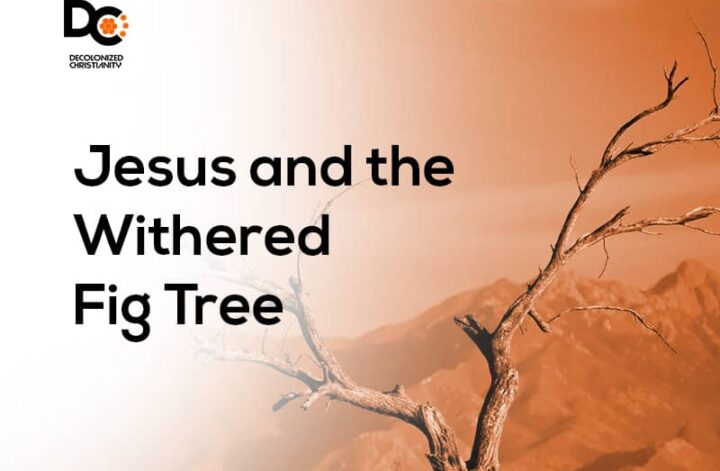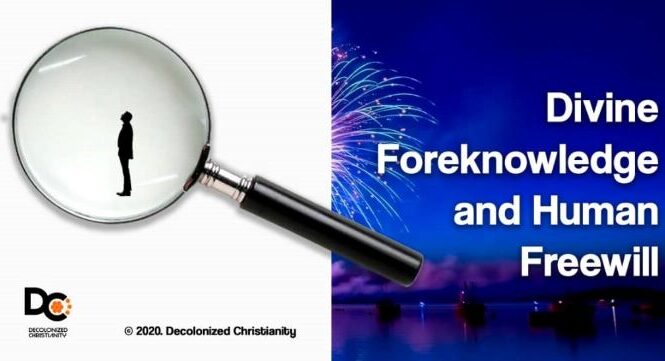Second Fig Tree Encounter
As mentioned earlier, Esther Miquel believes that Jesus was so infuriated with how he found the affairs of the temple that he wanted it to cease to exist. Following Jesus’ evening trip to the temple (Mark 11:11), he cursed a fig tree on the next morning for not being productive. Later, when Peter points out to Jesus that the tree has withered, Mark seems to depict Jesus as explaining the phenomenon as an answer to a prayer (Mark 11:20-25), the prayer being the pronouncement, “May no-one ever eat fruit from you again.” That Jesus directed this curse-prayer against the temple and its leadership is clarified by his invitation to his audience to have a similar faith in God: “Truly I tell you, if anyone says to this mountain, ‘Go, throw yourself into the sea,’ and does not doubt in their heart but believes that what they say will happen, it will be done for them” (24; emphasis added). The demonstrative, this, is literally referring to the mountain on which the temple was situated. In other words, this Markan prayer is specifically about the destruction of the temple, and not a universal formula for Christians to ask whatever they want from God. Miquel is worth quoting in some detail (149):
In ancient Judaism, priestly offices were exclusively attached to the exclusive cult in the Jerusalem temple. Therefore, the disappearance of the temple mount with the temple on it, by sinking into the sea or by any other means, would mean the social death of the Jerusalem priesthood. Consequently, the suggestion the Marcan Jesus makes to his disciples that they try the efficacy of prayer by praying confidently for the disappearance of this mountain, can be understood as the humorously veiled expression of his ill will towards the chief priests, to whom he wishes the loss of their “temple-den” as punishment for their wrongdoings.
According to Miquel, therefore, Jesus encouraged his disciples to pray for the same thing that he wanted—the destruction of the temple.
The Temple, Prayers, and Worship
On a cursory contextual reading, Mark 11:25 might seem a little out of place with its reference to forgiveness in relation to prayer. But Miquel argues that this verse “is an ironic proffer, on the part of Jesus, of a solution to the problem that the disappearance of the temple would pose to the Jewish practice of expiation” (149). Ancient Judaism was intricately connected with the temple; the temple was the heart of Judaism. The temple functioned similarly as “idols” do in pagan religions. When pagans observe devotions to an idol, for instance, they are not so subhuman as to not know that the wooden or metallic idol is not the god of their devotion. They merely use localized idols as a point of contact to the ethereal gods that they serve—of course, over time, the distinction may not always be explicitly maintained. Similarly, ancient Judaism’s temples are not Yahweh, but they are closely related.
In his First Temple dedication prayer, Solomon portrays how central the temple would be in Judaism (2 Chronicles 6:18-40). A recurring theme in this lengthy prayer is that God would answer prayers of forgiveness uttered in the temple. So, if Jesus sought the destruction of the temple, it would be natural for his audience to expect of him to solve the problem that would be engendered. In effect, Miquel argues, Jesus tells his disciples not to “be anxious about God hearing their prayer and letting the temple sink into the sea because there is an alternative way of obtaining divine forgiveness of sins that goes without temple, without sacrifice and without priests” (149). This reading would seem consistent with what Jesus says to the Samaritan woman in John 4:21-23:
a time is coming when you will worship the Father neither on this mountain nor in Jerusalem. You Samaritans worship what you do not know; we worship what we do know, for salvation is from the Jews. Yet a time is coming and has now come when the true worshipers will worship the Father in the Spirit and in truth, for they are the kind of worshipers the Father seeks.
It seems like even John anticipates a time when worshippers would not have to ascend a mountain to go serve God in a temple building.
Evaluating Miquel’s Argument
Miquel’s argument has many positives, including its insistence that the eleventh chapter of Mark is understandable in its final form, resisting the influence of excessive redaction criticism. It convincingly demystifies the act of destroying the fig tree as something that would have alarmed no-one in that culture. This object lesson would have likely further authenticated Jesus’ ministry as a prophet, because Jewish prophets often used object lessons in their ministries. Also, Miquel’s argument that Jesus’ performed metaphor was directed at the temple and its leadership is quite good. However, her treatment of Jesus’ pronouncement against the fig tree as a prayer to God—a move her argument needs in order to explain the prayer and forgiveness portions of Mark 11—is not as convincing. If “may no-one ever eat fruit from you again” is a prayer to God, then it is a very unusual prayer. Why did not Peter and Mark understand the pronouncement as a prayer—and is cursing a type of prayer? Besides, why pray to the Father concerning the destruction of a tree when Mark depicts Jesus as performing many miracles including the healing of a paralytic man (Mark 2:1-12) and raising a dead girl (Mark 5:41-42) without explicitly involving the Father? (Indeed, in the paralytic’s healing, Mark seems to depict Jesus as God.) Furthermore, her treatment of the editorial comment in 11: 13 (“because it was not the season for figs”) which depicts Jesus as being impatient
Work Cited
Miquel, Esther. “The Impatient Jesus and the Fig Tree: Marcan Disguised Discourse against the Temple.” Biblical Theology Bulletin, vol. 45, no. 3, 2015, pp. 144-154., www.academia.edu/14638383. Accessed 14 Nov. 2020.



